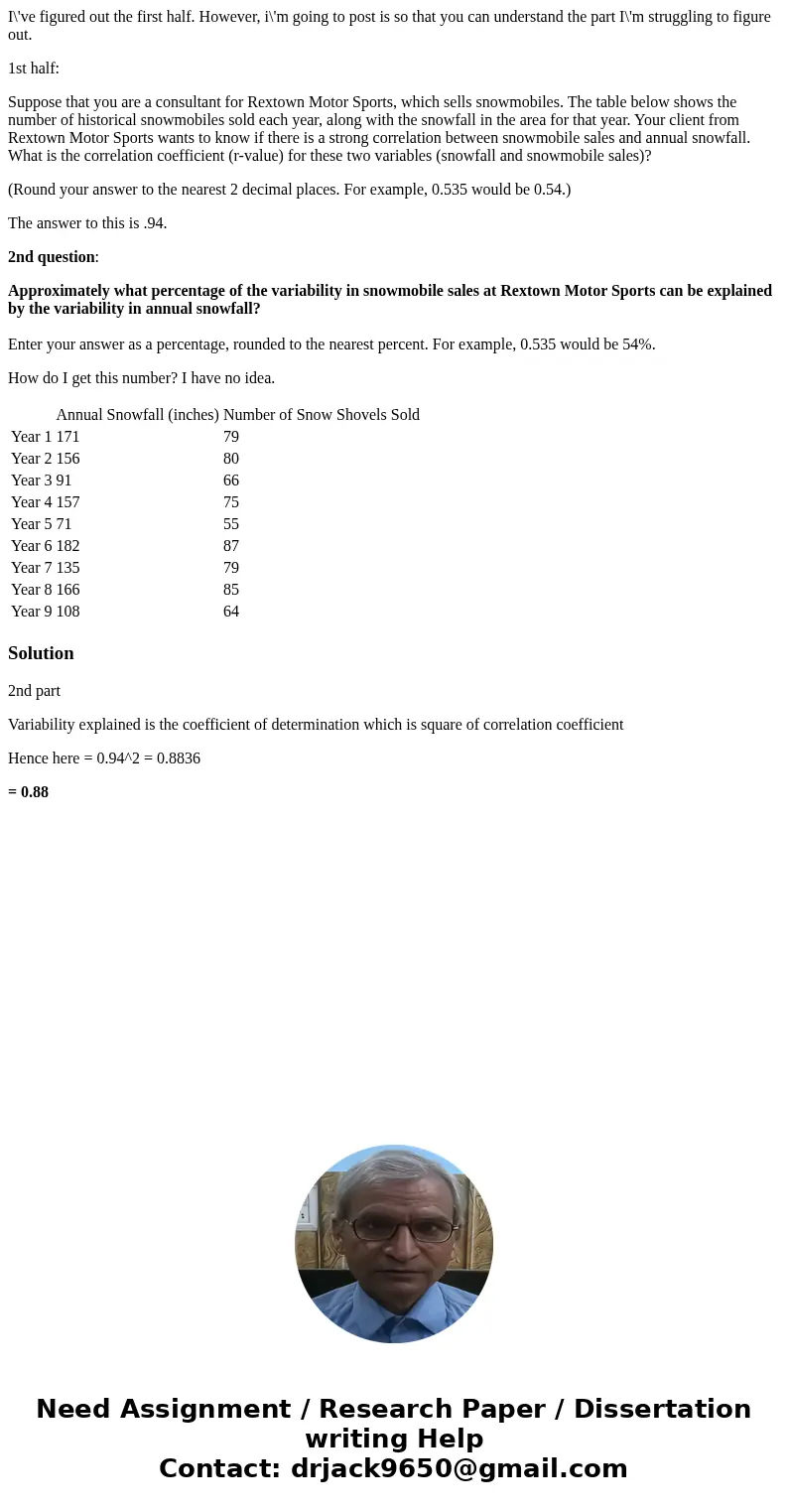Ive figured out the first half However im going to post is s
I\'ve figured out the first half. However, i\'m going to post is so that you can understand the part I\'m struggling to figure out.
1st half:
Suppose that you are a consultant for Rextown Motor Sports, which sells snowmobiles. The table below shows the number of historical snowmobiles sold each year, along with the snowfall in the area for that year. Your client from Rextown Motor Sports wants to know if there is a strong correlation between snowmobile sales and annual snowfall. What is the correlation coefficient (r-value) for these two variables (snowfall and snowmobile sales)?
(Round your answer to the nearest 2 decimal places. For example, 0.535 would be 0.54.)
The answer to this is .94.
2nd question:
Approximately what percentage of the variability in snowmobile sales at Rextown Motor Sports can be explained by the variability in annual snowfall?
Enter your answer as a percentage, rounded to the nearest percent. For example, 0.535 would be 54%.
How do I get this number? I have no idea.
| Annual Snowfall (inches) | Number of Snow Shovels Sold | |
| Year 1 | 171 | 79 |
| Year 2 | 156 | 80 |
| Year 3 | 91 | 66 |
| Year 4 | 157 | 75 |
| Year 5 | 71 | 55 |
| Year 6 | 182 | 87 |
| Year 7 | 135 | 79 |
| Year 8 | 166 | 85 |
| Year 9 | 108 | 64 |
Solution
2nd part
Variability explained is the coefficient of determination which is square of correlation coefficient
Hence here = 0.94^2 = 0.8836
= 0.88

 Homework Sourse
Homework Sourse